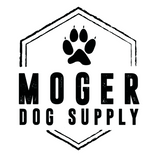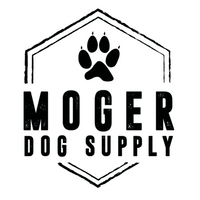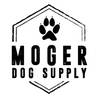How to Create a Safe and Friendly Home for Your Dog
As a responsible and loving dog owner, providing your dogs with a secure and welcoming environment is paramount. Your home should be where your dog feels comfortable with their harnesses and dog leashes and feels loved and safe, allowing them to thrive physically and emotionally.
This blog shares valuable tips on understanding your dog's needs and creating a safe and welcoming space.
Whether you're a first-time pet parent or looking to improve your existing setup, this guide will equip you with essential tips and insights to make your home the ultimate haven for your canine friend.
So, let's dive in and explore the factors that help you create a dog-friendly home!
Understanding Your Dog's Needs
Our dogs have unique needs and requirements, just like humans. As responsible pet owners, it's crucial to take the time to understand these needs and provide for them accordingly.
First and foremost, dogs need love and attention. They thrive on companionship and social interaction. Make sure you spend quality time with your dog daily, whether through playtime or simply snuggling up on the couch.
Need Factors for Dogs
Exercise is an essential aspect of a dog's life. Different breeds have different exercise requirements, so research how much physical activity your pup needs. Regular walks or trips to the park can help keep them mentally stimulated while burning off excess energy.
Diet plays a significant role in keeping your dog healthy and happy. Providing fresh water at all times is also vital for hydration.
Mental stimulation is often overlooked but equally important for our dogs. Dogs are intelligent creatures who need mental challenges to stay engaged and avoid boredom. So, puzzle toys or interactive games can be great ways to keep their minds sharp.
Don't forget about grooming! Bathing with all-natural dog shampoos, preferably aloe and oatmeal dog shampoo, for healthier fur and regular brushing helps maintain a clean coat while checking ears and nails and ensures good oral health practice.
By understanding these basic needs of your dogs, you'll be able to create an environment that promotes their physical and emotional well-being.

Dog-Proofing Your Home
When creating a safe and friendly environment for your dog, one of the top priorities is dog-proofing your home. Dogs are naturally curious creatures and can often get into mischief if given the chance. Here are a few tips to help you ensure that your home is a secure and hazard-free space for your dogs:
- Take a walk through each room in your house, looking for hazards such as loose cords, toxic plants, and small objects that could be choking hazards. Remove or secure these items to prevent accidents.
- Consider using baby gates or barriers to restrict your dog's access to certain areas of the house and protect valuable or fragile items from being damaged.
- Store all cleaning supplies and chemicals securely out of reach from your dog to prevent accidental ingestion of harmful substances.
- Keep all human and pet medications safely stored away from your dog's reach to avoid mistaking them for treats.
- Be aware of common foods toxic to dogs, such as chocolate, grapes/raisins, onions/garlic, and caffeine-rich products. Keep these foods out of their reach and educate family members about what not to give as treats.
Taking these precautions and making necessary adjustments around the house will create a safe and free environment for your beloved dog, where safety and freedom coexist harmoniously.
Choosing Safe and Appropriate Furniture
Safety should be your top priority when choosing furniture for your dog-friendly home. Choosing pieces that are safe and appropriate for your dog will protect them from potential hazards and ensure the longevity of your furniture.
Start by selecting furniture made of pet-friendly materials that can withstand scratching, chewing, and accidents. Look for upholstery fabrics that are durable and easy to clean, such as microfiber or leather. Avoid delicate fabrics like silk or velvet that may get easily damaged.
Can Furniture Designs be Dangerous?
Another important factor to consider is the design of the furniture. Choose pieces with rounded edges instead of sharp corners to prevent injuries if your dog bumps into them while playing or running around. Additionally, avoid furniture with intricate details or loose parts that could pose a choking hazard.
Remember, size matters too! Ensure the furniture you choose suits your dog's size and breed. A small toy breed might be perfectly content lounging on a cozy armchair, while larger breeds may require more spacious seating options like a sturdy couch or sectional sofa.
Consider investing in furniture covers or protective coatings specifically designed for pet owners. These can help guard against stains, odors, and excessive wear caused by your dog's daily activities.
By carefully selecting safe and appropriate furniture options, you can create an inviting space where you and your dogs can comfortably relax without worrying about accidents or damage.

Creating a Dedicated Dog Space
When creating a safe and friendly home for your dog, one of the most important things you can do is provide them with their own dedicated space. This will give them a sense of security and help keep them out of trouble. Here is how to create the space:
Choosing the Perfect Location
Start by choosing an area in your home where your dog can have some privacy. It could be a corner in the living room or even a spare room that you can designate as their own. Make sure this space is easily accessible for your pup and has enough room for them to move around comfortably.
Filling the Space with Comfort and Familiarity
Fill their dedicated space with items that they love. This could include their bed, toys, and maybe even some blankets or pillows for extra comfort. Adding these familiar items will make the space feel like a little sanctuary.
Implementing Safety Measures
Consider adding baby gates or barriers to prevent access to areas that may be off-limits or potentially dangerous for your dog. Knowing they are safe within their designated area will give you peace of mind.
Ensuring Proper Ventilation and Lighting
Don't forget about proper ventilation and lighting in this dedicated space. Dogs need fresh air like we do, so ensure adequate airflow through windows or doors. Additionally, ensure enough natural light comes into the area during the day.
The Benefits of a Dedicated Dog Space
By creating a dedicated dog space in your home, you are providing your dogs a place they can call their own while keeping them safe and happy!
Establishing a Safe Outdoor Area
Remember the importance of establishing a safe outdoor area for your dog when creating a dog-friendly home. Dogs love spending time outdoors, so ensuring their safety and providing them with an environment they can enjoy and prevent any hazards is essential.
- Ensure your yard is secure. Install a sturdy fence around your yard to prevent your dog from wandering off or encountering dangerous situations. Regularly check the fence for gaps or loose boards that may need attention.
- Create designated play and relaxation areas within your yard. Consider using soft grass or artificial turf to provide a comfortable surface for your dog. Avoid ingesting toxic chemicals on the lawn that could harm your pet.
- Ensure ample shade is available outdoors, especially during the hot summer. Use natural shade from trees or strategically place umbrellas to offer relief from direct sunlight and prevent overheating.
- Always provide fresh water outdoors for hydration. Place multiple water bowls throughout the outdoor area to ensure easy access for your dog while they play or rest.
- Be cautious of potential hazards in the yard, such as poisonous plants or sharp objects. Research and remove any plants that are toxic to dogs. Regularly inspect the outdoor area for items that could pose a risk and promptly remove them.
These steps allow you to establish a safe outdoor area where your beloved pup can roam freely while enjoying nature's wonders! Remember, creating a dog-friendly home means considering every aspect of their surroundings, indoors and out!

House Training and Potty Areas
Proper house training is crucial for the living environment with your dog. Consistent and positive reinforcement is key to successful house training. Begin by setting a regular potty schedule and frequently taking your dog to the designated area, especially after meals, playtime, or waking up.
Use verbal cues to encourage them to eliminate in the right spot. When your dog successfully uses the potty area, reward them with praise and liver bites dog treats.
Accidents may happen, but avoid punishment and redirect your dog to the appropriate spot. Your dog will learn to consistently use the designated potty area with patience and perseverance.
Safe Household Cleaning Practices
Cleaning your home is necessary, but using pet-friendly cleaning products and practices is essential to ensure your dog's safety and well-being.
Choosing Pet-Friendly Cleaning Products
Avoid using harsh chemicals that may harm your dog. Choose natural or pet-safe cleaning solutions that effectively clean your pet's health while being gentle.
Storing Chemicals and Cleaning Supplies Safely
Store cleaning products and supplies in cabinets or shelves outside your dog's reach. Securely close the cabinets to prevent your dog from accidentally accessing them and reduce the risk of accidental ingestion or exposure to harmful substances.
Minimizing Exposure to Harmful Fumes
Properly ventilate your home while cleaning to reduce your dog's exposure to cleaning fumes. Open windows and doors to allow fresh air to circulate, and avoid cleaning in confined spaces without proper airflow to prevent your dog from inhaling harmful fumes.
By following these safe household cleaning practices, you can maintain a clean and healthy living environment for you and your dogs.

Identifying and Removing Toxic Plants
Creating a safe home environment for your dog goes beyond dog-proofing and proper training. Identifying and removing toxic plants from your living space is often overlooked. Many common household plants can be harmful or fatal to dogs if ingested.
Recognizing these toxic plants and taking prompt action to remove them from your home can save your dog's life and prevent unnecessary medical emergencies.
Recognizing Common Poisonous Plants
Familiarize yourself with the names and appearances of common plants that are toxic to dogs. Here are some of them:
- Azaleas
- Daffodils
- Tulips
- Sago Palms
- Ivy (English Ivy, Devil's Ivy, etc.)
- Aloe Vera (ingestion can cause gastrointestinal upset)
- Hydrangea (some varieties)
This list is not exhaustive; other plants can be toxic to dogs. Always prioritize your dog's safety by keeping potentially harmful plants out of their reach.
Understanding Potential Symptoms of Plant Poisoning
Knowing the signs of plant poisoning is critical in identifying if your dog has ingested a toxic plant. Symptoms may vary depending on the specific plant and the amount ingested, but common signs include vomiting, diarrhea, lethargy, drooling, difficulty breathing, and changes in behavior.
In severe cases, your dog may experience seizures or loss of consciousness. If you suspect plant poisoning, immediately contact your veterinarian or an emergency animal hospital.
Choosing Pet-Safe Alternatives
If you enjoy having plants in your home, choose pet-safe alternatives that pose no harm to your dog. Some pet-friendly plants include spider plants, Boston ferns, African violets, and Christmas cacti.
Check with your local plant nursery or research to find alternatives that will add greenery to your space without posing a risk to your dog.
Keeping Plants Out of Your Dog's Reach
Prevention is key to keeping your dog safe from plant poisoning. Place any new plants in areas your dog cannot access, such as high shelves or hanging planters. Additionally, consider using indoor barriers or training techniques to discourage your dog from investigating plants.

Ensuring Proper Food and Nutrition
Ensuring proper food and nutrition is fundamental to maintaining your dog's health and vitality. Understanding your dog's dietary requirements is crucial in selecting the right type of food for its age, size, and activity level.
High-quality food that is balanced and appropriate for your dog's life stage provides essential nutrients to support their overall well-being.
Feeding your dog in controlled portions and following a regular feeding schedule helps prevent overeating and weight issues. Avoid feeding your dog human foods, such as chocolate, onions, grapes, and nuts, as some can be toxic to dogs.
Regularly monitoring your dog's weight and adjusting their diet can help prevent obesity and related health problems. Fresh water should always be available to keep your dog hydrated.
Consult your veterinarian for personalized nutritional advice if your dog has specific health conditions or dietary restrictions. By prioritizing proper food and nutrition, you can promote your dog's longevity and ensure they lead a healthy and happy life.
Understanding Dog Socialization
Dogs need to socialize too. Properly socializing your dog is crucial for their emotional well-being and behavior.
- Gradually introduce your dog to new people and animals in a controlled and positive environment.
- Pay attention to your dog's body language and behavior to ensure they feel comfortable during social interactions.
- Reward your dog with natural dog treats and praise when they have positive social interactions to reinforce good behavior.
Managing Anxiety and Stress
Stress and anxiety reduction for dogs is essential to their health and happiness. Like humans, dogs may suffer anxiety when they hear loud sounds or are left alone. It's crucial to provide them with a place of refuge where they may feel secure and at ease.
Stress may be reduced with calming tools like pheromone diffusers and anxiety wraps. Exposure to positive reinforcement training, mental stimulation, and regular exercise have all been shown to alleviate anxiety.
Consult a veterinarian to explore additional solutions like behavioral therapy or natural supplements. Managing their anxiety and stress can help your dog lead a happier and more balanced life.

Creating a Safe Exercise Routine
Regular exercise is vital for your dog's physical and mental well-being.
- Take your dog on daily walks and engage in interactive play sessions to keep them physically and mentally active.
- Consider your dog's age and fitness level when planning their exercise routine. Avoid overexertion, especially in extreme weather conditions.
- Some dogs may need more exercise. Observe your dog's behavior to determine its ideal activity level.
Regular Vet Check-Ups and Health Maintenance
Regular vet check-ups and health maintenance are essential for your dog's well-being and longevity. Scheduled visits to the veterinarian allow for early detection of potential health issues, ensuring prompt treatment and prevention of serious conditions.
During check-ups, the vet will thoroughly examine, update vaccinations, and discuss any concerns you may have about your dog's health or behavior. Regular dental care, parasite prevention, and appropriate vaccinations are part of health maintenance. And don’t forget to treat your dog to liver bites dog treats for being such a good dog!
By staying proactive and scheduling regular vet visits, you can provide the best possible care for your dog, ensuring your dog’s happy and healthy life.
Implementing these guidelines and creating a safe and friendly home environment for your dog will foster a strong bond and ensure their overall well-being and happiness. Remember, each dog is unique, so make adjustments based on your dog's needs and preferences.
If you want to buy a leather dog leash, the best all-natural dog shampoo, and natural dog treats, visit Moger Dog Supply for all-natural products to care for your dog! You can get dog leashes made in the USA, leather dog collars, and other grooming items! Get in touch today.



Leave a comment